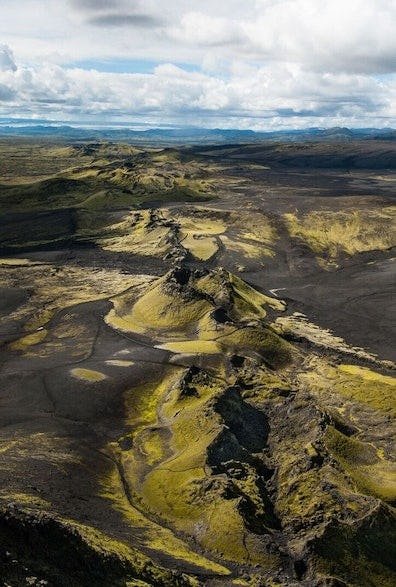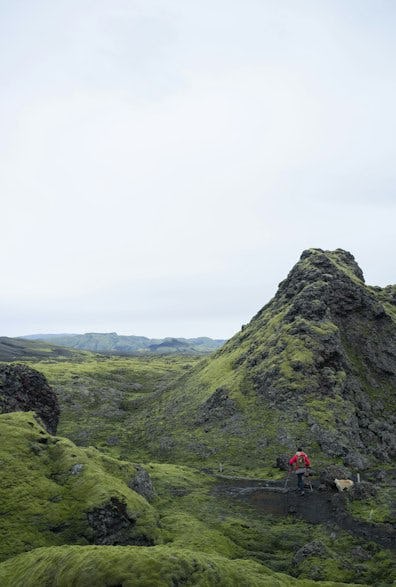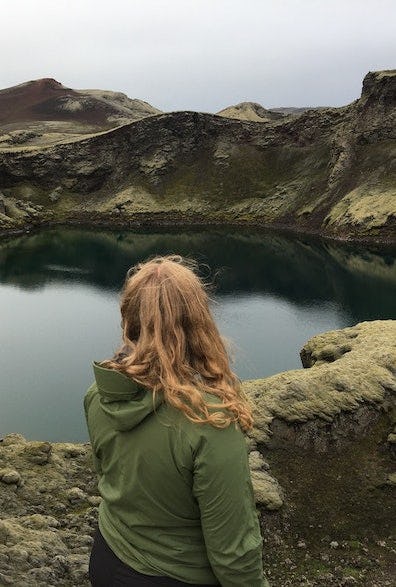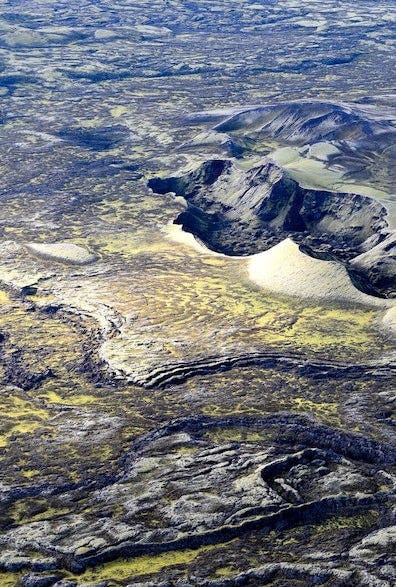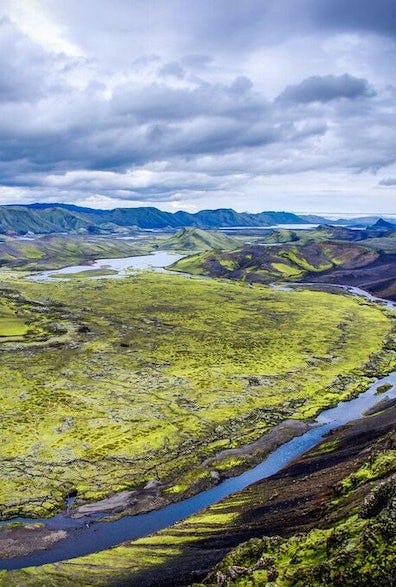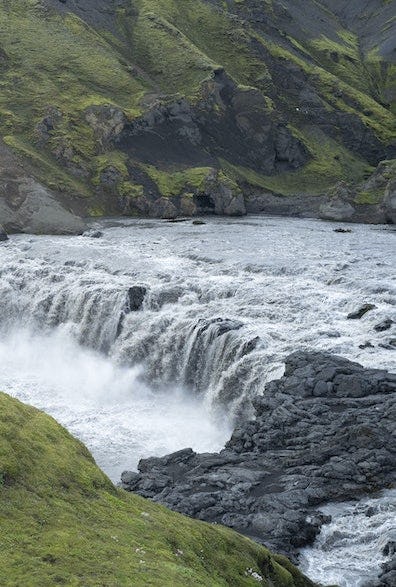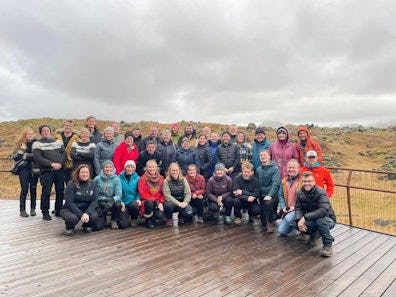Lakagígar
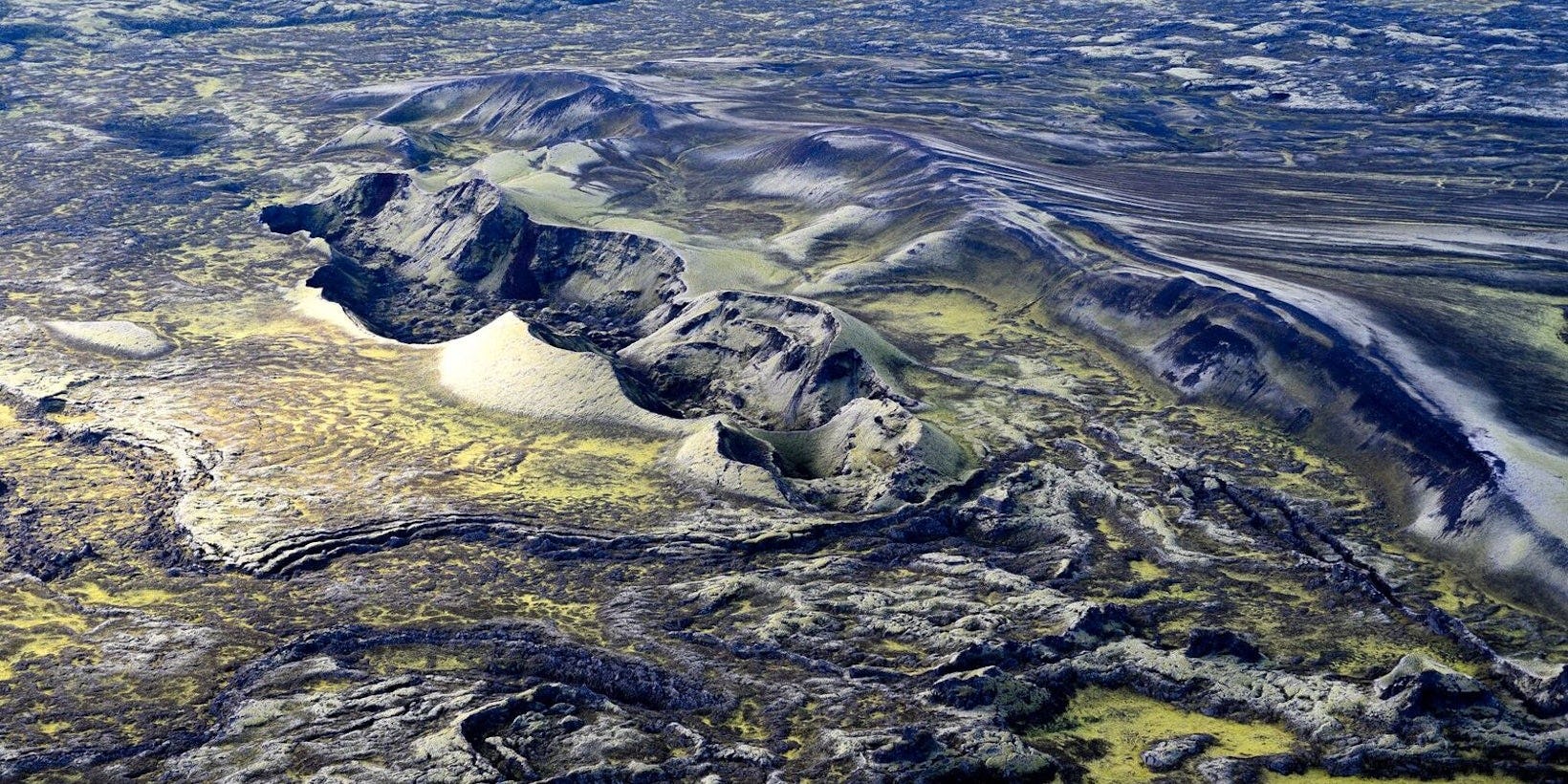
About Lakagíga
– Come visit
About Lakagíga
– Come visit
Lakagígar is a row of craters over 29 kilometres long. It was formed during the Skaftáreldar eruptions in 1783-1784, one of the greatest eruptions in Icelandic history. There are over 130 craters in total. The Skaftáreldar eruptions were one of the worst natural disasters since the country was settled, and were followed by the Móðuharðindi - "the mist hardships" - which affected the climate, crops and the livelihoods of people around the world. Today, the craters are covered in moss and are a popular destination, thanks to their spectacular natural beauty and history.
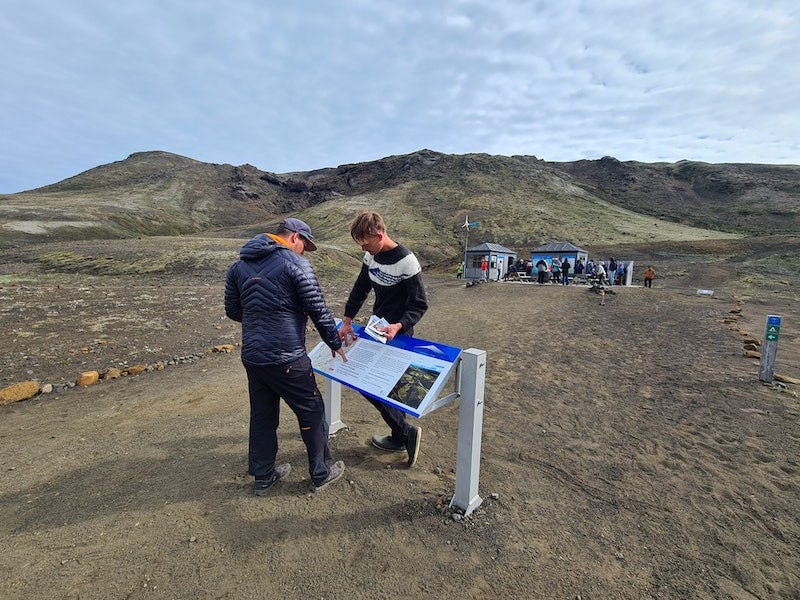
Access & services
There is a park ranger station at Laki where you can find information about hiking trails and the nature and history of the region. Tjarnargígur is a great spot to stop for a rest, enjoy the peace and quiet and watch the breeze dance on the water at the bottom of this beautiful crater. There are picnic tables and toilets at both locations.
The road to Lakagígar (F206 and F207) is only accessible by four-wheel drive and along the way are four unbridged river crossings that can swell in rainy conditions. We encourage visitors to inquire about road conditions at the park's visitors centre in Kirkjubæjarklaustur, where the rangers provide helpful travel advice.
Accomodation
Accommodations in the area are located in Blágil and include a campsite and cabin. Reservations for the cabin, which sleeps 16 in bunks in a common room, are made at the Skaftárstofa tourist information centre. The cabin features cooking facilities, flush toilets and hot showers. Only sleeping bag space is available. There is also a simple horse paddock in Blágil.
For further information and to make reservations, contact Skaftárstofa by phone at 487 4620 or by e-mail at klaustur at vjp.is. Accommodation fees according to the park's price list.
Nature & history
- Learn & discover
Nature & history
- Learn & discover
The region's young lava fields and damp climate have created unique conditions for moss and lichen. Expansive fields of wooly moss have formed along with rare biotopes in which snow lichen play a key role. A mat of moss can grow so thick that it inhibits the growth of other plant species. However, it's never long - geologically speaking - until floodwater deposits, ash layers or even lava settle on the groundcover, forming a bed for new vegetation.
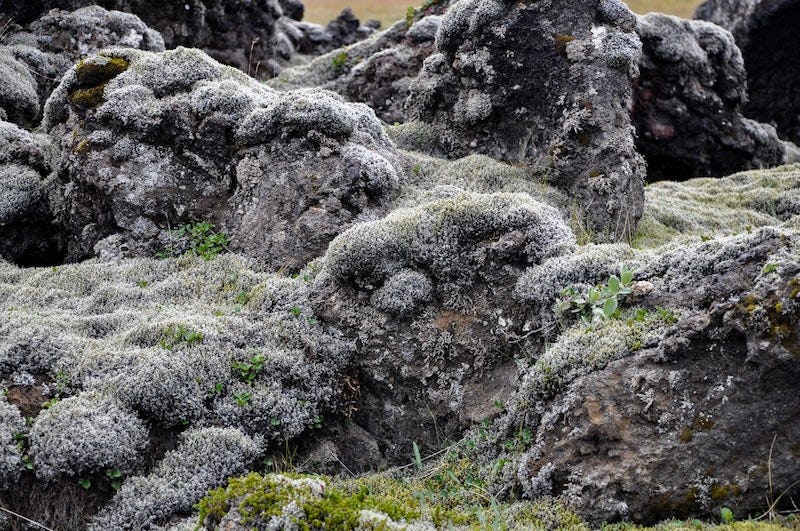
The Skaftáreldar eruptions
The catastrophes that followed the Skaftáreldar eruptions are the worst ever to strike Iceland and its people. About 12 cubic kilometres of lava flowed from Lakagígar to the settled areas, in two massive tongues known today as Eldhraun and Brunahraun. The lava tongues destroyed everything in their path, sandy deserts and pastures alike. Toxic ash, sulphuric gases and volcanic mist spread over most of the country, polluting the atmosphere. This mist gave the disaster its name: Móðuharðindin, or the mist hardships.
The mist caused the weather to cool and the sea ice to encroach up on land. When winter arrived in 1783–1784, livestock collapsed from starvation and disease caused by the toxic volcanic material. It is believed that about three quarters of all the livestock in Iceland died. A famine swept the country in the aftermath, in addition to a raging smallpox epidemic. The combination of hunger and disease sent one in every five Icelanders to their grave. The situation was especially grim in Fljótshverfi, Meðalland and in Síða, areas closest to the Skaftáreldar eruptions. Around 40% of the inhabitants there died, 20 farmsteads were covered by lava and another thirty were severely damaged. The effects of the eruption reached far beyond Iceland. The volcanic mist has been connected to a cold period in Alaska, droughts in Egypt and acid rain and crop failures in Europe, in turn leading to momentous societal upheavals.
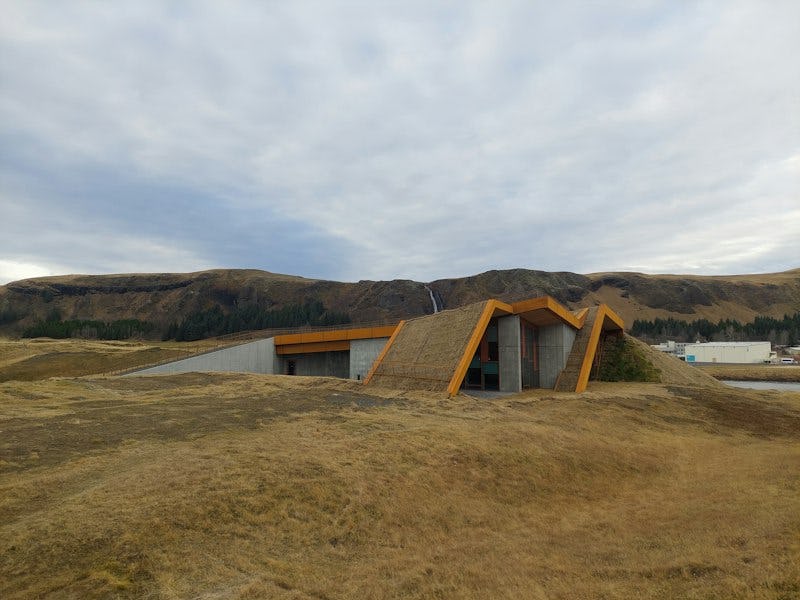
Skaftárstofa Visitor Centre
Skaftárstofa is the Vatnajökull National Park visitors centre, located by Sönghóll in Kirkjubæjarklaustur. It has an information centre for the municipality of Skaftárhreppur, and visitors have the option to see the exhibition "Springtrip" by the Iceland Glaciology Society. The exhibition, which was made on the occasion of the society's 70th anniversary, sheds light on its history, explains the construction of the society's cabins, trips on the glacier, glacial tongue measurements, research projects that have been carried out during spring trips to Vatnajökull, the glacier bacteria and the magazine Jökli.
